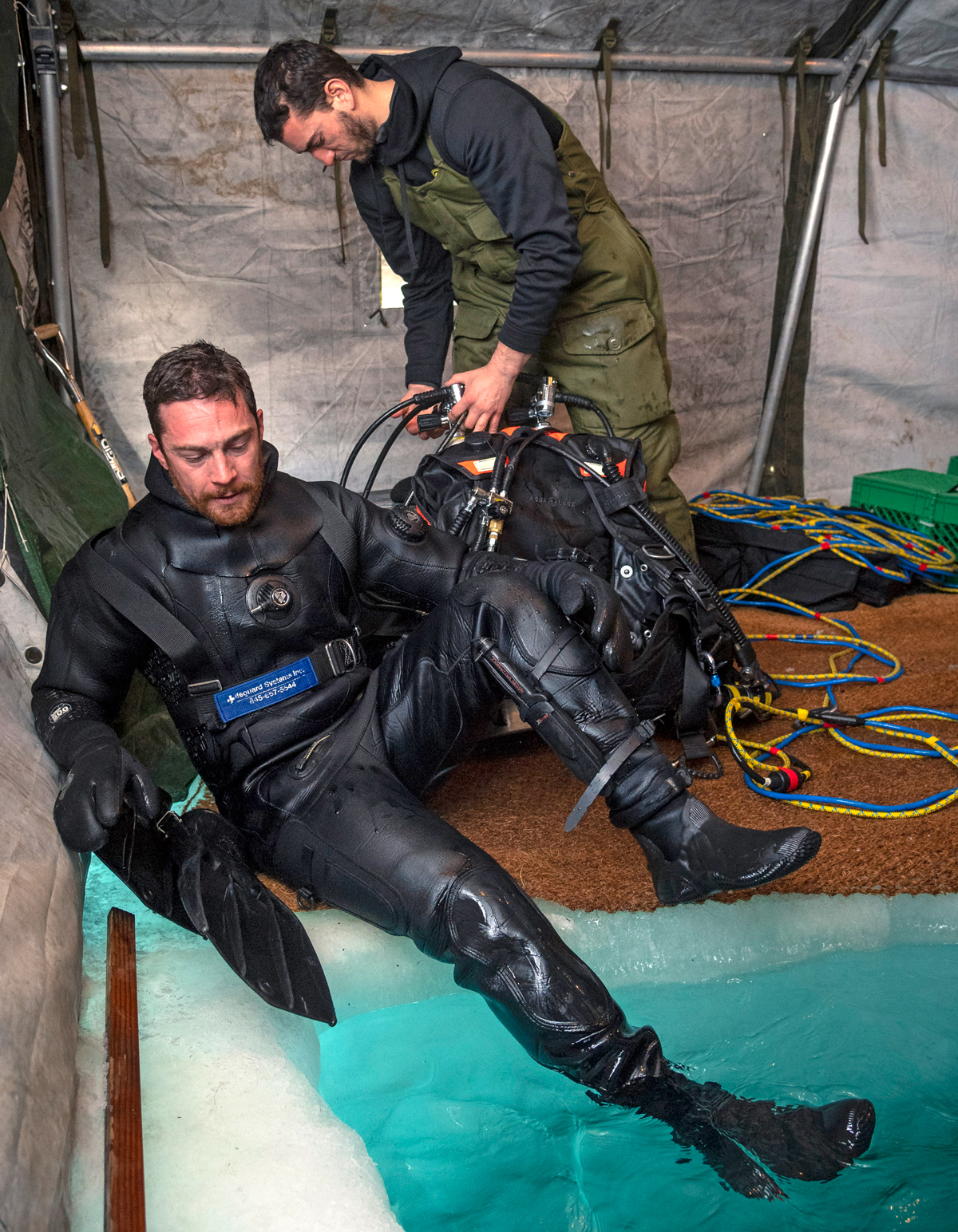Ice diving at -50°C, Operation Nanook
By Lookout on Mar 25, 2020 with Comments 0

Leading Seaman Bryan Ogle, clearance diver from Fleet Diving Unit (Pacific), completes an ice dive in Rankin Inlet, Nunavut.
Photo by Corporal David Veldman, Dive Task Force Imagery Technician
Lt(N) Éliane Trahan, Dive Task Force Public Affairs Officer
Operation Nanook takes place each year across the Yukon, the Northwest Territories, Nunavut, and Labrador. It features up to five deployments throughout the year.
One of these deployments was Operation Nanook-Nunalivut in Rankin Inlet, Nunavut, which involved the Dive Task Force, from March 2 to 17 with 31 divers from Canada, Finland, France, and Belgium.
Clearance Divers, Combat Divers and Port Inspection Divers from the Army and the Navy as well as a Finnish Diver wearing the Air Force uniform were all involved.
The Inuit community of Rankin Inlet has approximately 2,000 residents and is one of the most important communities in Canada’s North. It’s a meeting place and hub for the region with all flights to the Kivalliq passing through the bustling Rankin Inlet Airport.
The increase in traffic creates new safety and security risks. Canada must be prepared to conduct search and rescue, and to respond to natural and man-made disasters.
Operations such as Nanook-Nunalivut demonstrate the presence and capabilities of the Canadian Armed Forces in the Arctic and improve readiness in the region. It is also an opportunity to work with Canadian partners in the North such as members of the 1st Canadian Ranger Patrol Group. They provided advice and facilitated a smooth integration for the military members into an Arctic environment.
“Although winter dive conditions in Halifax consist of cold waters below five degrees Celsius, we rarely have the opportunity to conduct ice-diving operations in the Arctic,” said Lt(N) Kristopher Hicks, Dive Team Officer in Charge. “The dive team’s presence in Rankin Inlet enabled us to revalidate our procedures, test our equipment, and prove our ability to dive and conduct light salvage operations in a harsh and unforgiving environment. The conduct of dive operations in the Arctic, in temperatures below -50 degrees Celsius, present many unique challenges relating primarily to equipment temperatures and freeze-up. There are additional variables and mitigation measures that must be thoughtfully considered to ensure successful operations.”
During the operation at Rankin Inlet, divers participated in recovering pieces of a CF-18 aircraft wing. They explored the seabed at a depth of 15 meters and exercised their skills under the ice using the Ultra-Light Surface Supplied Diving System, and the Ice Diving Compressed Air Breathing Apparatus configuration with communications and video.
Filed Under: Top Stories
About the Author:





